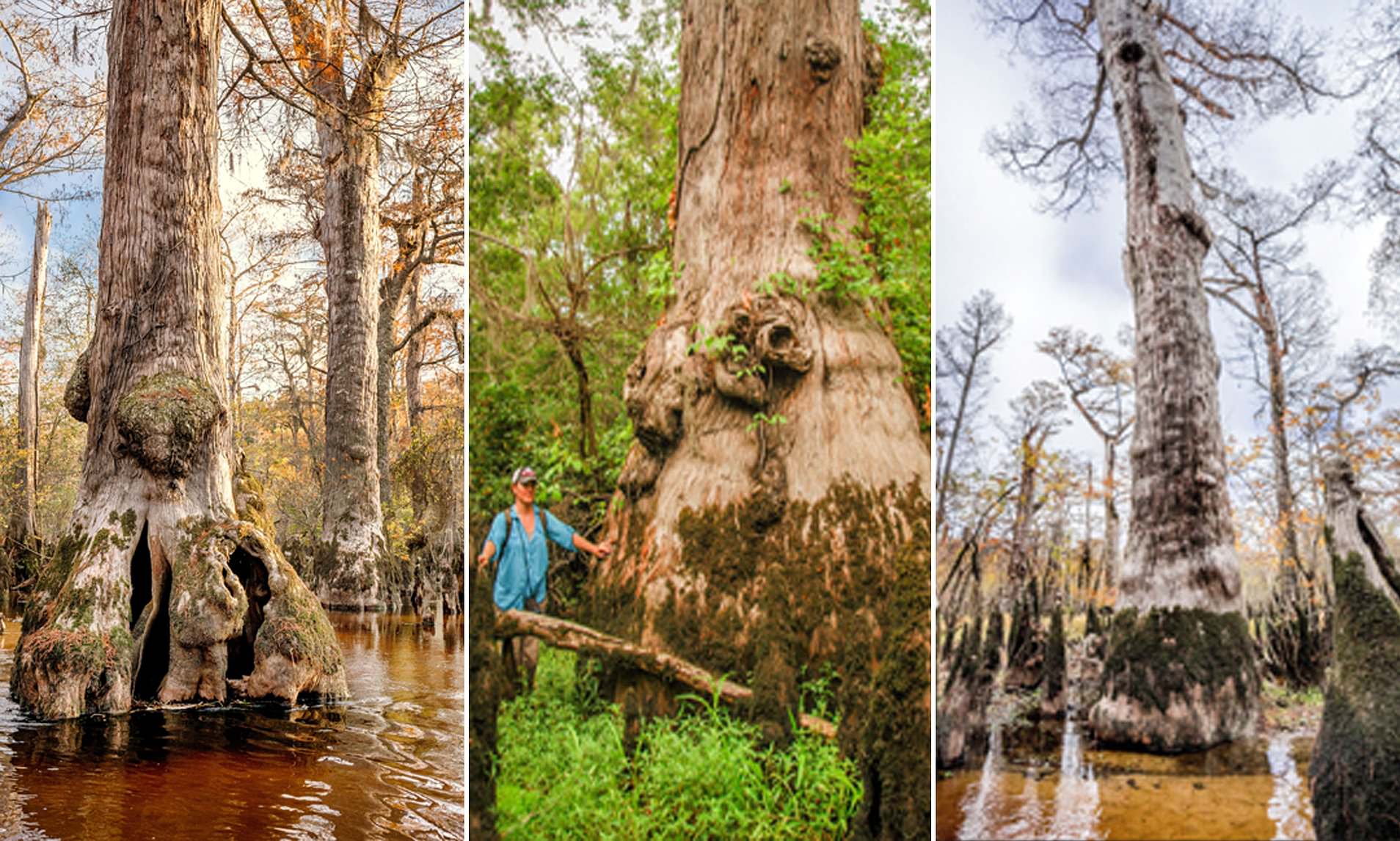Researchers
have identified a group of ancient bald cypress trees which are over 2,000
years old in the forested wetlands of North Carolina’s Black River.
Staggeringly, the scientists found that one of the trees was 2,624 years old.
This makes the bald cypress the oldest-known tree in the eastern portion of
North America, as well as the longest-living known wetland tree species on
Earth, according to a study published in the journal Environmental Research
Communications.
The trees
were discovered in 2017 by lead author of the study David Stahle from the
University of Arkansas and his colleagues, who took 110 core samples to
determine their age with radiocarbon dating. Stahle’s prior research in the
area had already identified bald cypress trees (Taxodium distichum) which were
up to 1,700 years old, but the new data, taken from trees which had not been
studied before, suggests they are longer-lived than previously thought.
"The
area of old growth bald cypress was 10 times larger than I realized,"
Stahle said in a statement. "We think there are older trees out there
still."
The trees
form part of an intact ecosystem of wetlands that extend along most of the
65-mile length of the Black River, which the researchers call one of the “great
natural areas of eastern North America.” The river has been recognized as one
of the cleanest and high quality waterways in North Carolina, and Stahle’s work
has helped boost preservation efforts in the area. In fact, The Nature
Conservancy—a private land conservation group which keeps its holdings open to
the public—has purchased around 6,400 hectares of this river ecosystem.
However, the
researchers say that thousands more hectares of high quality ancient forests
remain unprotected.
"It is
exceedingly unusual to see an old-growth stand of trees along the whole length
of a river like this," Stahle said. "Bald cypress are valuable for
timber and they have been heavily logged. Way less than 1 percent of the
original virgin bald cypress forests have survived."
Aside from
their impressive age, the trees can also help to reconstruct ancient climate
conditions in the region. This is because their growth is affected in different
ways by both dry and wet conditions, and this shows up in the core samples. In
fact, the researchers say that the tree samples have provided the longest
exactly-dated climate proxy—a source of climate information taken from natural
material which can be used to estimate past conditions—in eastern North
America, showing evidence of drought and flooding during pre-colonial times.
"Dr.
Stahle's original work on the Black River, which showed trees dating from Roman
times, inspired us to begin conservation on the Black more than two decades
ago," Katherine Skinner, executive director of The Nature Conservancy’s
North Carolina chapter, said in a statement. "This ancient forest gives us
an idea of what much of North Carolina's coastal plain looked like millennia
ago. It is a source of inspiration and an important ecosystem. Without Dr.
Stahle, it would have gone unprotected and likely destroyed."
Living trees
over 2,000-years-old are extremely rare worldwide, the researchers say. To
date, only eight species have been proven to live for more than this amount of
time—six of which are found in the western United States, one in Chile and,
now, the bald cypress trees in North Carolina. The team say that the cypress
tree which they determined to be 2,624 years old, is one of the oldest known
continuously living trees on the planet. Only individual trees of Sierra
juniper (2,675 years old), giant sequoia (3,266 years old), alerce (3,622 years
old) and Great Basin bristlecone pine (5,066 years old) have been demonstrated
to live longer.
Nevertheless,
the bald cypress tree is the oldest-known wetland tree. In second place is the
Montezuma bald cypress (T. mucronatum,) found in Mexico, which can live for up
to 1,500 years.
The
researchers hope that the latest findings will boost conservation efforts in
the area, which could help to mitigate some of the threats that the ancient
wetland forest is facing.
“To counter
these threats, the discovery of the oldest known living trees in eastern North
America, which are in fact some of the oldest living trees on Earth, provides
powerful incentive for private, state, and federal conservation of this
remarkable waterway,” the authors wrote in the study.


Comments
Post a Comment